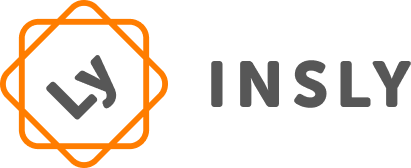In today’s world, IT systems play a very important role in the success and sustainability of Managing General Agent (MGA) business. To outline the importance of that, consider the following quotes:
“We estimate technology could reduce the combined ratio by as much as 21%”
~ Morgan Stanley and the Boston Consulting Group
“During the past months, Lloyds have responded to FCA pressure to ensure that data capture and reporting standards are continuously improved. Some new coverholder applications have been rejected where they could not demonstrate sufficiently adequate risk, premium and claim data capture and reporting systems. Coverholders need to avoid reporting formats that require re-keying of information and the need for manual intervention.
Coverholders who already hold authority will not have that authority removed if they do not yet have adequate report generation systems, but such a move is surely just a matter of time.”
~ Lloyds & FCA, study conducted by JTW Connect, 18 September 2015
Given that Insly SaaS insurance software is used by many MGAs, we summarized our findings in some easy-to-understand suggestions that you should keep in mind when implementing insurance software.
No double-keying of data
When setting up an IT system, you should build it in such a way that prevents any double-keying of data when information flows from Clients to Underwriters. The standard information flow is as follows:
- Insured fills out the proposal form (Word) and Insurance Broker emails it to MGA
- MGA inserts the information into their IT system (this can be Word or Excel) and creates the proposal document
- MGA sends proposal to Insurance Broker, who forwards it to Insured
- After Insured accepts the proposal, Broker asks for insurance policy from MGA
- MGA prepares the policy document from their IT system (again, this can also be Word or Excel) and emails it to Broker
- MGA sends the policy data to Underwriter with Bordereaux (Bordereaux is also often prepared manually)
- Underwriter inserts the data from Bordereaux to their IT system
It is quite obvious that throughout that process, a lot of manual work is done, and in addition to unnecessary costs, there is considerable potential for error inherent in the process.
Aim for simplicity of the user interface, but not on product and tariffs
Unfortunately, it is usually the other way around in the London market – products are very simple, but the sales process is very complicated. The reason for this is usually quite simple – if you do not have an IT solution or if you have a bad IT solution, then you need to keep your products simple (fit on one A4 piece of paper). After selecting the right IT solution, you can turn it the other way round – create more complicated products that enable you to do much more accurate underwriting and thus increase your profitability, but simultaneously simplifying the sales process considerably for the Client, Broker and yourself.
All your data in one system
Aim to have all data (e.g. underwriting, clients, policies, invoices, claims etc.) in one system, or if that is not a possibility, then at least create the necessary integrations between the different systems. Of course, the latter is usually more expensive and does not give you the necessary flexibility, but it’s still better than nothing.
This provides huge advantages in terms of simplifying processes and analysis. For example, if you have claims and insurance policies in one IT system, then:
- when triggering a renewal quote, you can very easily check whether the client has had the claims, and thus trigger a different workflow;
- you can very easily create Claim Triangulation reports;
- it helps significantly with portfolio analysis.
Make sure that your time to market will be fast and flexible
Choose the partner that you believe can deliver the best time to market and flexibility.
It is specifically important that flexibility is allowed on your product card, which means:
– changes in tariffs and tariff structure
– changes in documents that the system produces
– changes in workflows
“The Only Thing That Is Constant Is Change” is more relevant than ever in today’s competitive insurance landscape. The good news is that most of your competitors are quite slow, so outperforming the average is not much of a challenge.
Eat that pie in small bites
Innovation and digitalization does not mean that you have to do everything to all of your product lines at once – in fact, we would strongly recommend against that approach.
Avoid big IT projects with “predictable costs”; instead, build business-critical essentials first (low-cost and low-time expenditure) and launch them immediately. If they work, then additional functionality and products can be added on top of that core functionality. The waterfall process of doing massive 1-year, million-euro projects is dead and will not return.
Instead, the basic principle of Lean Development, i.e. Plan – Develop – Test – REPEAT, should also become the standard protocol in the insurance world.
Start with low-premium, high-volume products
When starting to innovate and digitalize, it usually makes sense to go for low-premium, high-volume products first, where distribution efficiency plays a critical role.
This is where you would see the results the quickest and where you can therefore measurably add value to your business chain. These are also simple and straightforward products, such as Travel Insurance, Excess Insurance, and Personal Accident Insurance, to name just a few.
Furthermore, in addition to bringing greater benefits to the business process, the system development and setup times are also shorter and cost considerably less.
Owner of the implementation
Assign someone as the owner of the implementation and ensure that he or she has enough freed-up time. It is very often the case where we assume that Underwriter or Insurance Broker can implement IT project on the same time when still involved in his everyday work. This set-up simply means that there will be no system to deliver.
The truth is that in addition to the development bill, you will also make an investment of your time, which is most likely of a similar size to the development bill, if you were to assign them both monetary values.
More posts on similar subjects:
Insly presentation on MGAA market briefing.
Top 10 Considerations when Implementing a SaaS Insurance Software
Why is Lloyds losing out on Insurance Technology Innovation?
Insly Managing General Agents MGA Software Launched
Find out more about Insly insurance software for MGAs.



